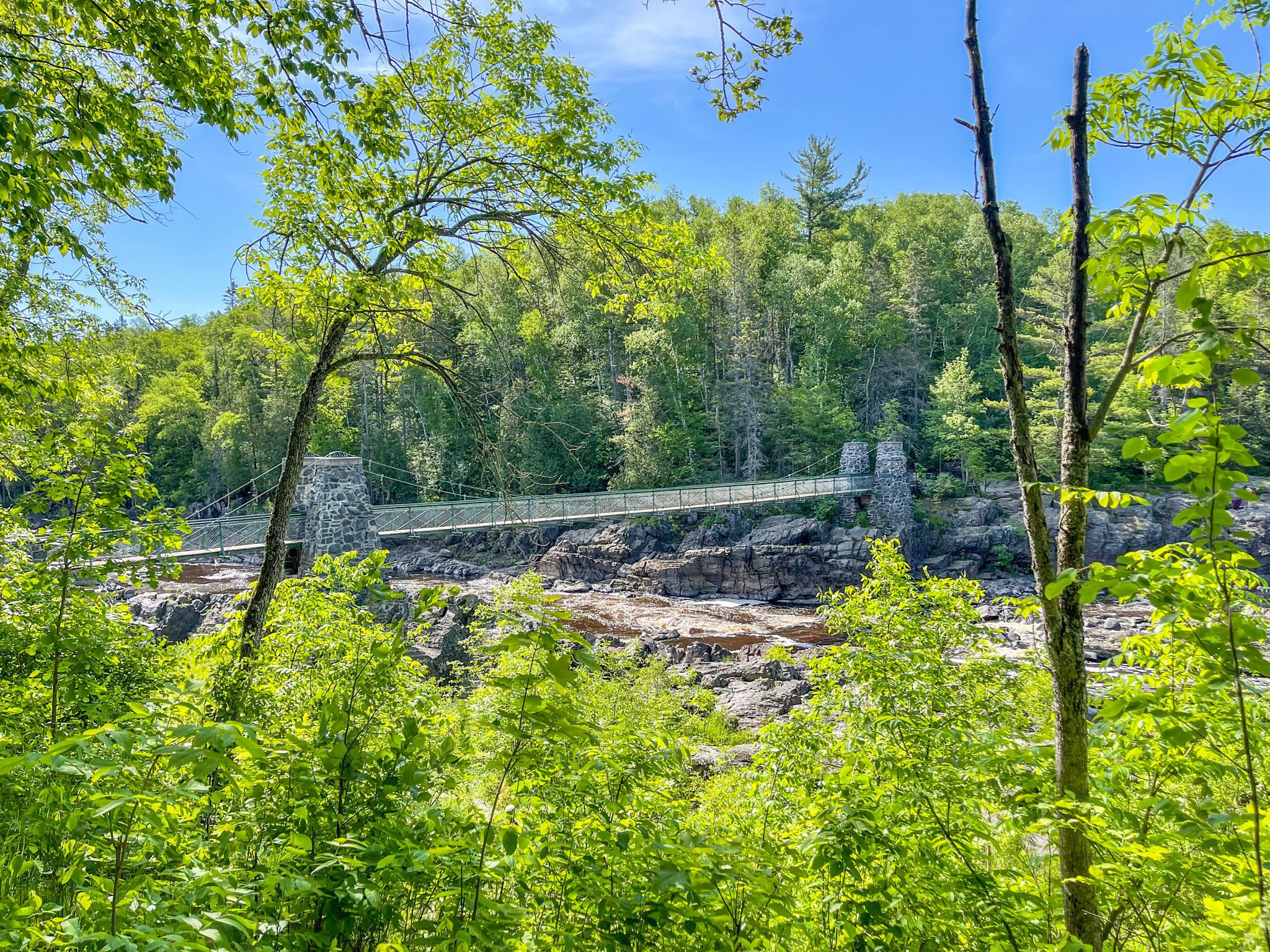
One of the most iconic structures in Jay Cooke State Park is the Swinging Bridge, a historic landmark that has withstood numerous challenges from both nature and time. This beloved bridge has undergone multiple reconstructions, surviving floods, repairs, and restorations.
The Original Construction
In 1924, the Forest Service constructed the first version of the Jay Cooke Swinging Bridge using logs and rope. This simple yet functional bridge provided a way to cross the St. Louis River, offering visitors a scenic view of the river below.
By 1934, the bridge had undergone its first major upgrade. Between 1934 and 1935, the Forest Service added sturdy stone pillars, transforming the bridge into a more permanent structure. These stone supports would become one of the defining features of the Swinging Bridge.
Flooding Challenges
Throughout the 1930s and 1940s, the bridge faced periodic closures due to flooding. During these years, the river would swell, often damaging parts of the bridge and making it unsafe for use. Local authorities discouraged visitors from using the bridge during these times, highlighting the unpredictability of nature in the area.
In 1950, a historic flood struck with devastating force, recorded at 42,000 cubic feet per second. The flood overwhelmed the bridge’s smaller pillars and destroyed much of the decking. The bridge was left inoperable, and repairs were necessary to restore its structural integrity.
Following the 1950 flood, the Swinging Bridge underwent significant reconstruction. By 1953, the bridge reopened with concrete caps added to the original stone pillars. These new caps raised the bridge by about 7.5 feet, allowing it to withstand future floods more effectively. The reconstructed bridge stood strong for several decades, enduring minor alterations and repairs in the 1970s and 1980s to keep it functional for visitors.
 The 2012 Flood
The 2012 Flood
Despite its previous reinforcements, the Swinging Bridge faced its most catastrophic flood in June 2012. This flood, recorded by Minnesota Power at a staggering 55,000 cubic feet per second, was the most destructive in the park’s history. The force of the rushing water knocked down the smaller pillars once again and completely destroyed the northern side of the bridge. It seemed as though the Swinging Bridge had finally met its match.
Reconstruction and Reopening
Incredibly, the four original stone columns survived the flood, standing firm against the powerful current. After 16 months of dedicated restoration work, the Swinging Bridge reopened in 2013. The new bridge, rebuilt with steel for added strength, retained its original charm with wooden decking reminiscent of its original design. To further enhance the visitor experience, the surrounding area was cleared of overgrown trees, improving visibility and accessibility to the bridge.
After all the challenges and changes over the years, the Swinging Bridge remains a must-see spot in Jay Cooke State Park. Whether you’re stopping by to take in the views, snap a photo, or enjoy a peaceful walk across, it’s a perfect way to connect with the park’s natural beauty and rich history. The bridge has a story to tell, and it’s one that continues to welcome visitors year after year. So, if you find yourself in the area, be sure to make the Swinging Bridge part of your adventure – it’s a highlight you won’t want to miss!

 The 2012 Flood
The 2012 Flood